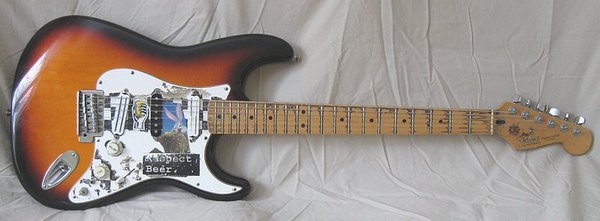Rickgrxbass
Senior Member
- Messages
- 409
Well, I've gone and done it. I've got a nice Strat body from eBay, a brand-spankin' new neck from the Showcase (Hopefully they'll get it fretted soon), and various other gubbins from other places, as per usual.
Since this is going to be my first "conventional" Strat, I'm wondering what everyone else has found to be the most practical way to wire it up. I'm leaning towards having a master volume, master tone, and typical 5-way switching, with a bypass for the bridge for the "all 7 combos" option. If I find the right size switch, that won't leave me with any extra holes in the standard pickguard, and it won't be as busy as having three mini-switches and whatnot.
Sound like a plan, or does someone have a better idea? :toothy12:
Since this is going to be my first "conventional" Strat, I'm wondering what everyone else has found to be the most practical way to wire it up. I'm leaning towards having a master volume, master tone, and typical 5-way switching, with a bypass for the bridge for the "all 7 combos" option. If I find the right size switch, that won't leave me with any extra holes in the standard pickguard, and it won't be as busy as having three mini-switches and whatnot.
Sound like a plan, or does someone have a better idea? :toothy12:



